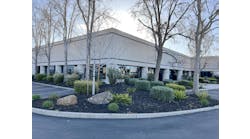“Wouldn’t it be nice to know before you take an order whether or not you can do it?” Rockwell Automation’s Noel Henderson discussed how combinations of data in traditionally disparate silos can reveal new insights.
“Real-time is too late. The goal is to be proactive, not reactive,” said Noel Henderson, senior technical consultant, Information Solutions, to attendees of the session, “Gain meaningful insights into production by associating multiple data sources” at Rockwell Automation TechEd this week in San Diego. “The title of this presentation is the premise of The Connected Enterprise.”
Henderson outlined scenarios showing how different systems can interact and influence each other—what happens when management can see production status versus goals, when production can see what’s happening now, and when maintenance can see what’s coming up so they can schedule their activities to minimize downtime.
“Our top stories—company priorities—are in preventive maintenance, safety, batch clean-in-place (CIP) and compliance, inventory management and asset management,” Henderson said.
All about OEE
Overall equipment efficiency (OEE) is the product of availability, performance and quality. “In The Connected Enterprise, you see what’s happening in real time,” Henderson said. “You can compare similar machines across plants.”
Operations can see what’s happening, view a preventive maintenance (PM) dashboard, foresee a problem and put maintenance on it. “Live data, historical data, fault data and disparate data from other sources can all be viewed in one dashboard instead of physically going out and looking at the machines, or viewing it in unconnected systems,” Henderson added.
If OEE starts to drop, one of those three parameters is having trouble. “Is there too much maintenance, which is impacting availability?” Henderson asked. Some people change the oil in their cars every 3,000 miles because that used to be what they needed. Maybe the manufacturer now specifies 7,500 miles.
Is there a specific, repeating problem or issue that should be solved? If belts keep wearing out too often, it might be worth finding and correcting the underlying cause.
“OEE of 85% is considered world-class,” Henderson said. “That means 15% downtime. If 8% is scheduled maintenance, 7% is available to work on.” Connected systems allow plants to see a “layered picture that a single system can’t provide,” he added.
Annual losses due to downtime in the food & beverage industry total $20 billion. In automotive, downtime costs average $22,000 per minute. “There’s a huge potential savings,” Henderson said.
Safety and risk management
One safety incident can be a major setback due to direct costs and higher insurance rates, but small safety issues also add up. Connected plants can see an overview of plant safety performance, and obtain automated reports where manual reports might be “forgotten,” Henderson says. “They can see safety systems being bypassed, and take corrective action.”
Safety issues can lead to lower productivity—for example, a malfunctioning light curtain may cause an operator to slow down. “Surfacing that data can show opportunities for improvements that have immediate ROI,” Henderson said, such as installing more operator-friendly systems, automatic cleaning so operators don’t have to stop to clean, and more efficient procedures. Smart safety sensors “let the machine collaborate with the operator,” he added, for example, to automatically be put into a safe state for adjustments.
Clean-in-place “looks simple, but it has to be done right and audited,” Henderson said. Software manages recipes and materials, and reduces risks to product quality by recording and documenting water usage, chemical usage, material and energy for each changeover. “Track exact amounts and minimize waste,” Henderson added. Make sure water is hot enough, time is optimal, streamline the process and produce digital records in compliance with, for example, the Food Safety Act.
Inventory and asset management
“Can the plant handle a proposed order?” Henderson asked. Materials, equipment and workforce must be available. “Wouldn’t it be nice to know before you take an order whether or not you can do it? And what you need to do to fit it in the schedule?”
If quality is a concern, “Verify the quality of materials in real time, in alignment with operations,” Henderson said. “Know which is the most capable and economical equipment or facility to produce the order.”
Asset management involves changeovers, uptime, quality, safety and productivity. “Monitor equipment health, including the networks,” Henderson said. “If machines can’t talk, they can’t work together.” Protect against unauthorized access, and track users’ actions. “Are they helpful, or hurting?” he asked.
Know which firmware revisions are on replacement parts, and make automatic backups for repair operations. Know who tweaked what and when, and have it on record. Track calibrations and certifications so they don’t expire, and know whether equipment is performing according to its specification. “FactoryTalk VantagePoint EMI from Rockwell Automation can give you all this with a single point of access,” Henderson said. “All of these systems come together so you can get the big-picture view.”
It may seem overwhelming, but it’s not. Rockwell Automation is making these connections easy, and recommends a simple process to get started:
- Define a pilot with clear objectives.
- Do a project with a short-term scope of one to three months.
- Show success, and more ideas will be generated.
Rockwell Automation and its partners are ready to help. Henderson said, “There’s no reason to go it alone.”




